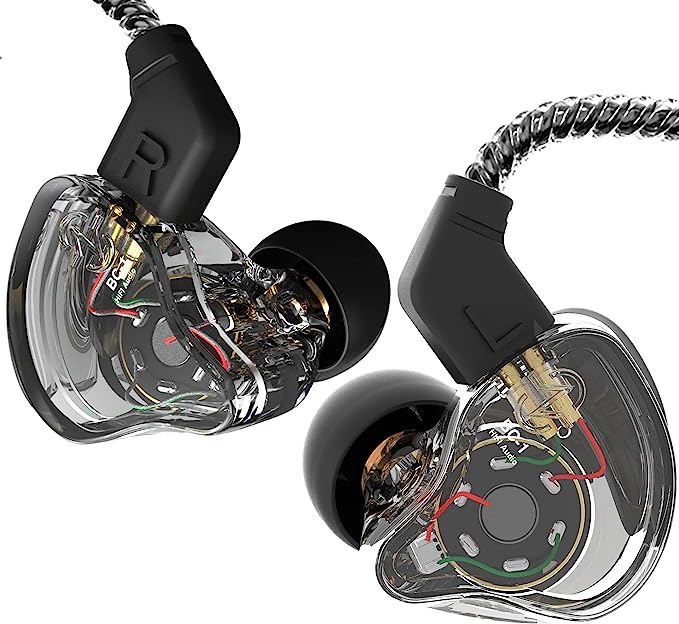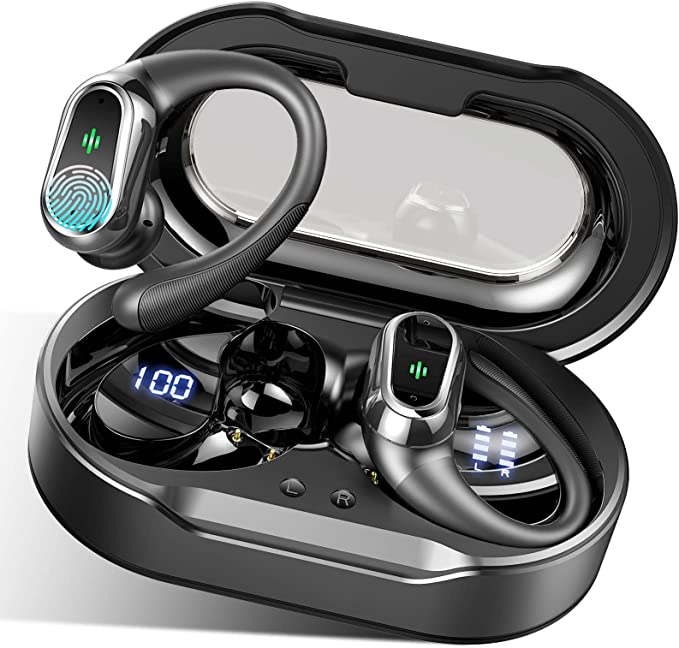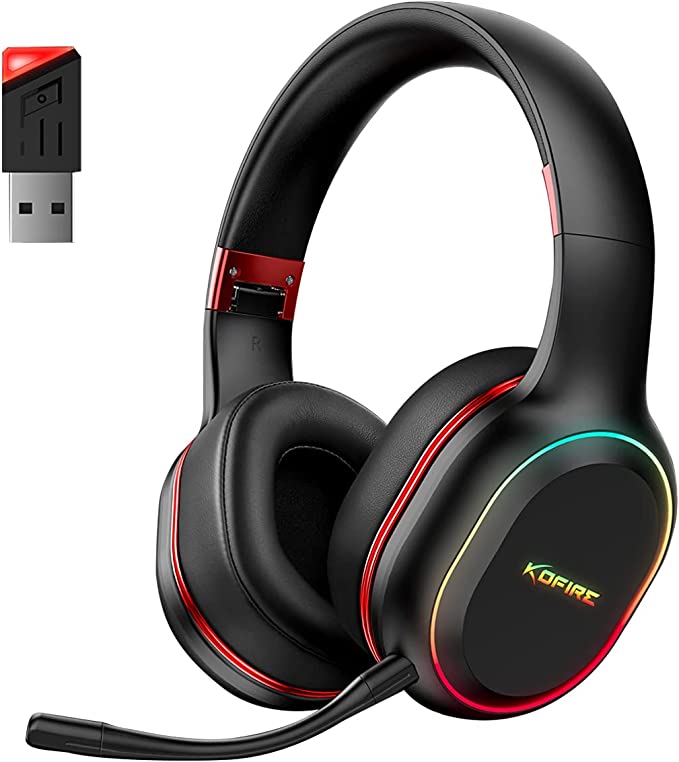We live in a world saturated with technology, and often, choosing a new gadget feels like navigating a sea of specifications and acronyms. Take wireless earbuds, for instance. You might see terms like “Bluetooth 5.4,” “IP7 Waterproof,” or “Sound Isolation” listed, as they are for the Donerton I66 model. But what do these labels truly signify beyond marketing buzz?
This isn’t a review of the Donerton I66 – we lack the necessary real-world testing data and user feedback for that. Instead, consider this a guided exploration. Using the I66’s listed features as our map, we’ll delve into the science and standards behind these common terms. Our mission is to equip you, the curious consumer, with a better understanding of the technology packed into these tiny audio companions, empowering you to make more informed choices, whether considering this model or any other.
It’s crucial to start with transparency: our journey relies solely on the manufacturer’s provided specifications for the I66. We’ll be exploring the general principles and standard definitions these specs point to, but we cannot speak to the specific performance, sound quality, comfort, or battery life of this particular product. Think of it as learning the rules of the road, even if we haven’t driven this specific car.

The Invisible Tether: Untangling the Strands of Bluetooth 5.4
At the very core of any wireless earbud experience lies the connection technology: Bluetooth. It’s the invisible thread linking your audio source (phone, laptop, tablet) to the buds nestled in your ears. The Donerton I66 states it uses Bluetooth 5.4. But what does that number really mean?
Think of Bluetooth standards like generations of wireless communication protocols. Each new version aims to build upon the last, refining the way devices talk to each other over short distances using radio waves. Version 5.4 is one of the more recent iterations in the Bluetooth lineage. While the specifics of its implementation in the I66 are unknown, Bluetooth versions within the 5.x series, compared to older standards like Bluetooth 4.x, generally introduce potential improvements across several fronts.
Imagine the connection between your phone and earbuds as a wireless highway. Newer Bluetooth versions often work towards creating a more efficient highway system. This can translate to:
- Potential for Enhanced Stability: Fewer metaphorical traffic jams or potholes, meaning potentially more stable connections with fewer annoying audio dropouts or stutters, especially in environments with lots of wireless interference.
- Improved Power Efficiency: Newer standards often incorporate smarter power management. This could contribute to longer listening times on a single charge for the earbuds, although the actual battery life depends heavily on battery size, usage patterns, and specific chip implementation – information not provided for the I66.
- Advanced Features: Newer Bluetooth versions can enable features like Auracast™ broadcast audio (allowing one source to transmit to many listeners, like in public venues – though support depends on both devices) or improvements in connection speed and multi-device handling.
From your perspective as a listener, the promise of a technology like Bluetooth 5.4 is the potential for a smoother, more reliable wireless experience. It sets an expectation for a solid foundation upon which the audio experience is built.
However, it’s vital to remember the caveat: the number itself is only part of the story. The actual connection quality you experience depends significantly on how well the Bluetooth technology is implemented in both the earbuds and the device you’re connecting them to. Factors like antenna design, the specific Bluetooth chip used, and even software optimization play crucial roles. Without specific test data for the Donerton I66, we understand the potential offered by the 5.4 standard, not its guaranteed performance in this product.

Crafting Your Auditory World: Sound, Isolation, and Clarity
Beyond the connection, the core purpose of earbuds is, of course, sound. The I66 description mentions “HiFi Stereo” and “Deep Stereo Bass.” Let’s unpack these terms from an audio science perspective.
- The Stereo Soundstage: “Stereo” simply means that audio is delivered through two distinct channels – one for your left ear, one for your right. This separation is fundamental to creating a sense of space and dimension in music and sound. It allows you to perceive the placement of instruments or effects across a virtual stage, making the listening experience far more immersive than single-channel (mono) audio. “HiFi,” short for High Fidelity, expresses an aspiration – the goal of reproducing the original audio recording as accurately and faithfully as possible, without significant distortion or coloration. Achieving true HiFi depends complexly on the quality of the audio drivers (the tiny speakers in the buds), the internal electronics, the tuning, and even the fit in your ear.
- Feeling the Beat (Deep Bass): Bass refers to the lower end of the audio frequency spectrum – the frequencies that give music its thump, rumble, and sense of weight. “Deep Bass” suggests an emphasis on these low frequencies in the I66’s sound signature. Producing satisfying bass from tiny earbud drivers is an engineering challenge, relying on clever acoustic design within the earbud shell and precise tuning of the driver’s movement. It’s worth noting that the perception of bass is also somewhat subjective and can be influenced by the quality of the seal the earbud makes in your ear canal. Terms like “Deep Bass” are descriptive goals rather than measurable technical specifications.
Now, let’s consider how earbuds interact with the noise of the world around you. The I66 lists “Sound Isolation” as its form of Noise Control.
- Building Your Bubble (Sound Isolation): This is a passive form of noise reduction. It works much like a traditional earplug: the physical body of the earbud and its soft tip are designed to create a snug seal in your ear canal. This physical barrier blocks a certain amount of external sound from reaching your eardrum, particularly higher-frequency noises like chatter or ambient hiss. Think of it like putting on a good pair of earmuffs – you’re physically muffling the outside world. The effectiveness of sound isolation depends heavily on achieving a proper, secure fit with the right-sized ear tips.
It’s crucial to distinguish Sound Isolation from its more technologically complex cousin, Active Noise Cancellation (ANC). ANC uses microphones to listen to external noise and then generates opposing sound waves (“anti-noise”) to electronically cancel it out before it reaches your ear. Sound Isolation, as listed for the I66, relies purely on the physical blockage.
Finally, the product title mentions a “Noise Cancelling Mic.” This can sometimes cause confusion.
- Being Heard (Noise Cancelling Mic): This feature typically refers to technology applied to the microphones used for phone calls or voice commands, not to the sound you hear. Its purpose is to make your voice clearer to the person on the other end of the line (or to the voice assistant) by attempting to filter out background noise around you (like street sounds, wind, or office chatter). This is often achieved using multiple microphones and algorithms that try to distinguish your voice from ambient noise. It does not reduce the noise you hear while listening to music – that’s the job of Sound Isolation (or ANC, if present). The actual effectiveness of microphone noise cancelling varies greatly depending on the technology used, and specific performance details for the I66 aren’t provided.
Defying the Elements: The Meaning of IP7 Waterproofing
Life happens. Workouts get sweaty, and sometimes you get caught in unexpected downpours. This is where durability ratings come in. The Donerton I66 claims an IP7 Waterproof rating. What does this code actually mean?
“IP” stands for Ingress Protection, and it’s part of an international standard (IEC 60529) used to classify how resistant an electronic device’s enclosure is to intrusion from foreign objects (like dust – represented by the first digit) and liquids (represented by the second digit). Sometimes, if a device hasn’t been tested for solid particle resistance, the first digit is replaced with an ‘X’, as in IPX7.
Let’s break down IPX7 (assuming the ‘X’ for solids, as is common, though the listing just says IP7):
- The ‘7’ is the key here: This digit specifically relates to liquid ingress protection. A ‘7’ rating signifies that the device’s enclosure is protected against the effects of temporary immersion in water under specific, standardized conditions. The standard defines this as immersion in up to 1 meter (approximately 3.3 feet) of freshwater for up to 30 minutes.
In practical terms, what does this mean for the Donerton I66? An IP7 rating suggests a robust level of water resistance suitable for:
- Sweaty Workouts: It should comfortably handle perspiration during vigorous exercise.
- Rainy Conditions: Getting caught in the rain shouldn’t pose a threat.
- Accidental Splashes: Minor spills or splashes should be fine.
Think of it like a water-resistant watch that’s okay for washing hands or being out in the rain, perhaps even a quick, shallow dip, but isn’t designed for serious swimming or diving.
However, it’s equally important to understand the boundaries and limitations of an IP7 rating:
- Not for Swimming: It’s generally not recommended for swimming, as submersion duration, depth, and water pressure during movement can exceed test conditions.
- Not for Showers (Especially Hot/Soapy): Steam and hot water can compromise seals over time, and soaps/shampoos contain chemicals that might affect water-resistant materials.
- Freshwater Only: The tests are conducted in freshwater. Saltwater, chlorinated pool water, or other liquids can be more corrosive or damaging.
- Durability Over Time: Water resistance isn’t necessarily permanent. Seals can degrade over time due to wear and tear, exposure to chemicals, or impacts.
- Charging Port Care: Even if the earbuds are rated IP7, the charging case likely isn’t, and the earbuds themselves must be completely dry before being placed back in the case or charged.
So, while IP7 offers significant peace of mind against everyday moisture, it’s not an invincible shield against all liquid threats.
Beyond the Sound: A Nod to Sustainability
In an era of increasing environmental awareness, some manufacturers highlight efforts towards sustainability. The Donerton I66 listing mentions it has features recognized by certifications like “Carbonfree Certified” and “Climate neutral by ClimatePartner.”
While the specific scope and details of these certifications for this particular product aren’t provided in the listing, these labels generally indicate that the company has engaged in a process to:
- Measure: Calculate the carbon footprint associated with the product’s lifecycle (from manufacturing to disposal).
- Reduce: Implement measures to lower these emissions where possible.
- Offset: Invest in projects (like reforestation or renewable energy) that remove or prevent an equivalent amount of greenhouse gas emissions elsewhere, aiming to balance out the remaining footprint.
Achieving carbon neutrality through offsetting is a complex topic with ongoing debate about its effectiveness, but these certifications signal an intention by the manufacturer to address the environmental impact of their products. It represents an additional factor that environmentally conscious consumers might take into consideration.
Conclusion: Empowered Listening Through Understanding
Our journey through the specifications of the Donerton I66 Wireless Earbuds has hopefully illuminated the science and standards lurking behind the technical jargon. We’ve explored the potential advancements suggested by Bluetooth 5.4, decoded the concepts of HiFi Stereo and Deep Bass, distinguished Sound Isolation from Active Noise Cancellation, clarified the role of a Noise Cancelling Mic, understood the practical meaning and limitations of an IP7 Waterproof rating, and acknowledged the intent behind sustainability certifications.
The true value here isn’t a verdict on the Donerton I66 itself – we simply don’t have the data for that. Instead, the value lies in the knowledge toolkit you’ve hopefully acquired. Understanding these fundamental principles – how wireless connections evolve, the basics of sound reproduction and isolation, the standardized language of durability ratings – empowers you. It allows you to look beyond the surface-level marketing terms and ask more informed questions when evaluating any pair of wireless earbuds.
We must reiterate the crucial missing pieces for the I66 based on the provided information: we don’t know its real-world battery life (hours per charge, case capacity), its actual Bluetooth connection stability or range, concrete details about its sound quality or specific tuning, how comfortable or secure the fit is for different users, or how well the noise-cancelling microphone performs in noisy environments. And crucially, there are no customer reviews available to offer real-world perspectives.
Technology is often presented as a series of inscrutable labels. But by taking a moment to understand the underlying science and standards, we transform from passive consumers into more discerning, empowered listeners, better equipped to find the audio tools that truly fit our needs and enhance our daily lives.



